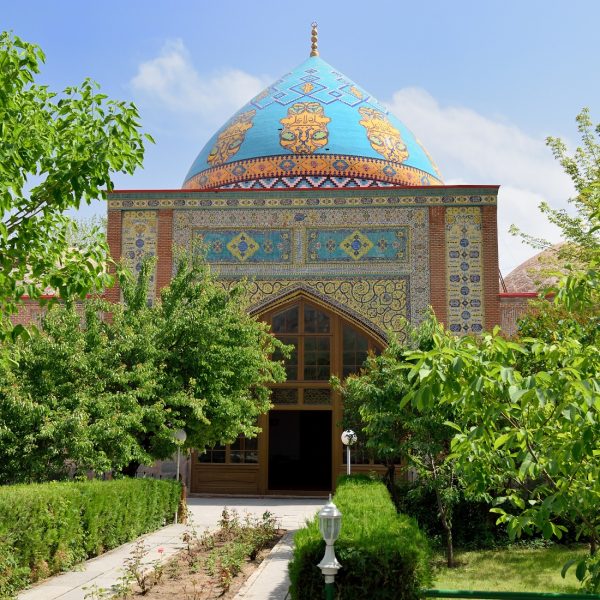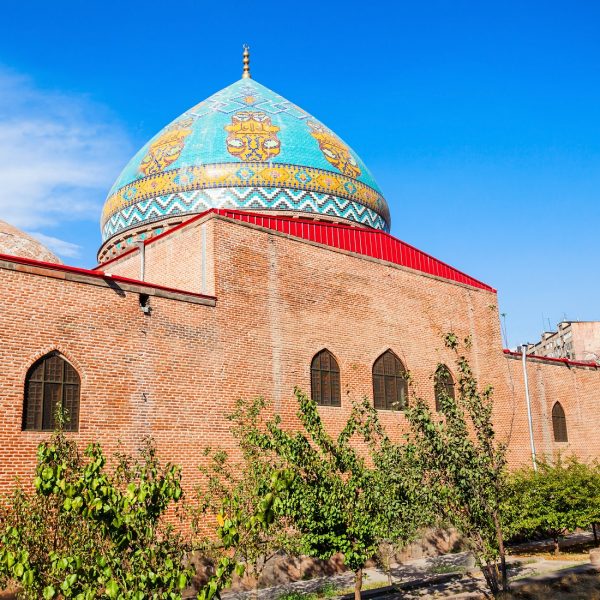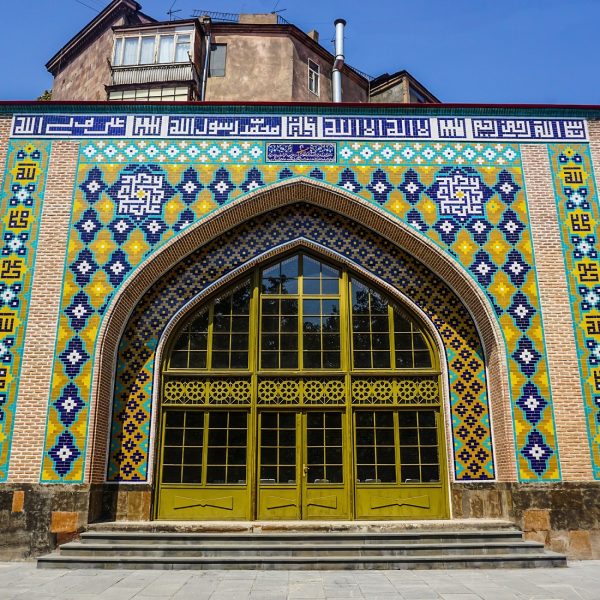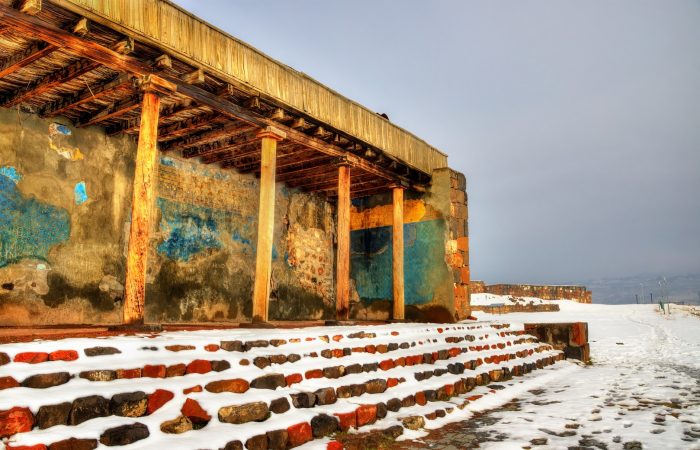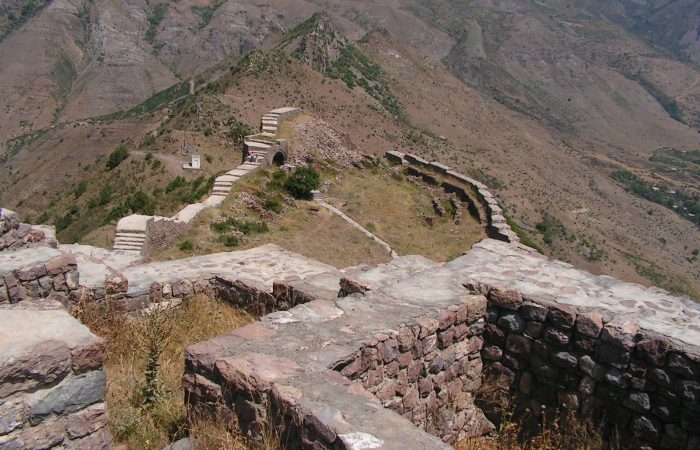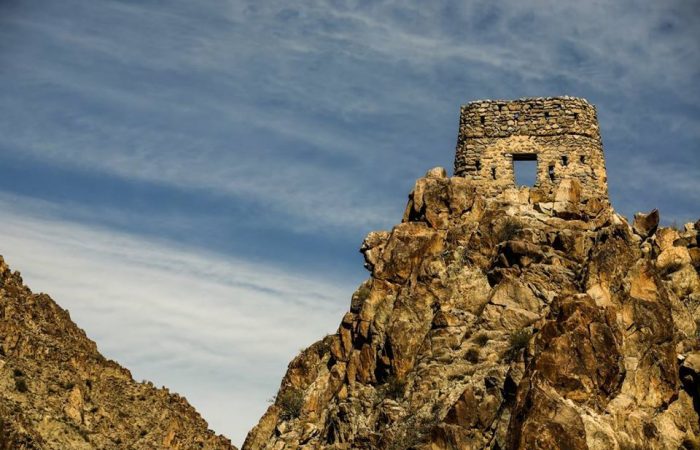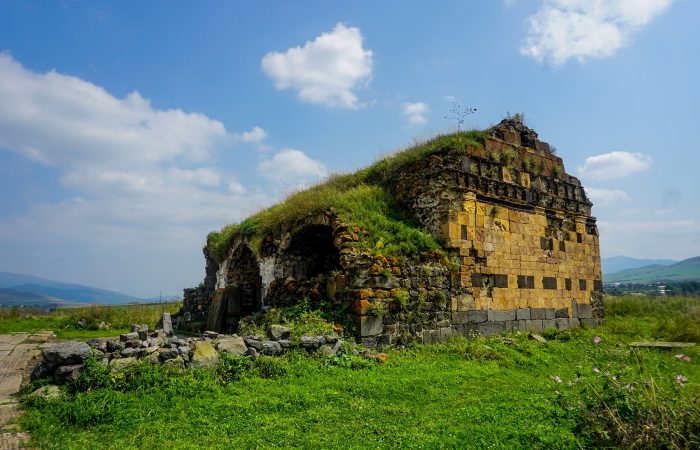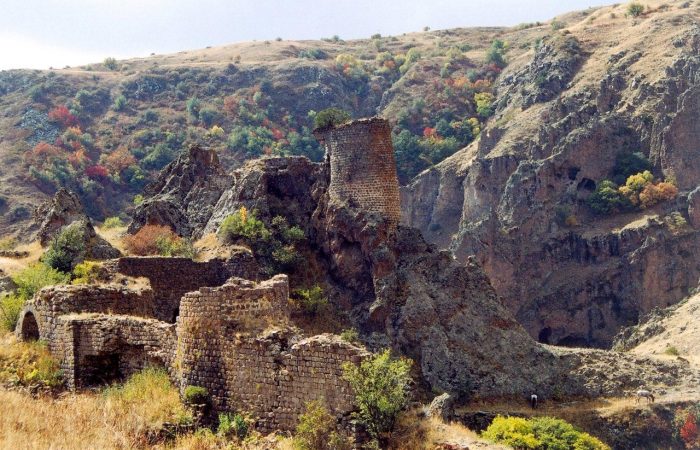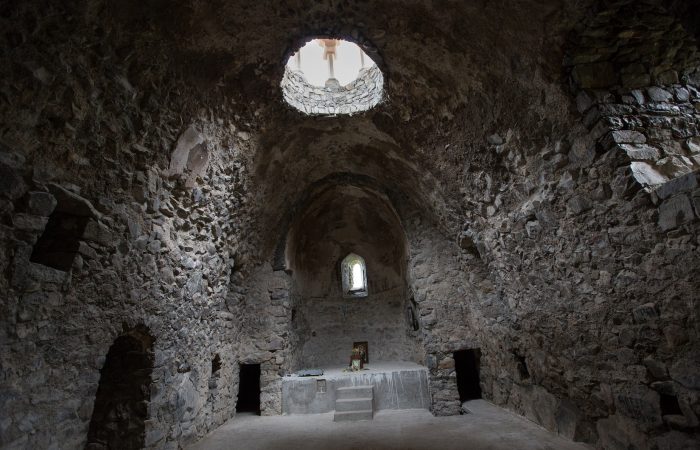Blue Mosque History
Armenia has been under the rule of many Muslim rulers who have dominated this land for hundreds of years. Persians were one of them and presently, the Blue Mosque is the only surviving mosque in Yerevan.
The exact origins of the mosque cannot be traced, but the construction started in 1764 and was completed within the same decade. The construction is believed to be commissioned by Hussein Ali Khan, the local governor. The mosque was to serve as the main Friday mosque. The portal and the minaret were decorated with fine tile work. The central court had a fountain with cells around it. It was also surrounded by elm trees.
The construction years featured a period of Persian dominion over Yerevan and Eastern Armenia. Back then Yerevan was a provincial town with a population of 20,000 inhabitants. As a result of the Russo-Persian 1827-1828 wars, both Yerevan and Eastern Armenia appeared under the direct rule of the Russian Empire. After the treaty of Turkmenchay was signed Arax River was recognized as the boundary between Russian zone of direct influence and Iran. Notably, it’s true even today since Arax makes up the actual borders between Southern Armenia and Iran. As to the establishment of the Russian rule in 1827, the Blue Mosque became the largest of its eight functioning mosques.
The Blue Mosque during the Soviet Union Period
Several sources, which can be regarded as rather reliable, claim there were 10 functioning mosques in Yerevan before the arrival of the Russians. These mosques were abandoned or demolished. Out of the ten only one mosque was left and that is the splendid Blue mosque, which housed the Museum of the City of Yerevan during the Soviet times.
However, the mosque suffered greatly during the Soviet era. Just like all Armenian churches and in general, all religious institutions in Armenia, the mosque appeared in a very pitiful condition under the secular policies implemented by the communists and the pressure put on it. Already in 1931 the religious services were completely stopped and the only function the mosque performed was it served as the Museum of the City of Yerevan.
Blue Mosque and Post Soviet Union Period
After the Soviet Union collapsed the Blue Mosque underwent a serious and radical restoration with shiny brick and tiles. The restoration, which was funded by Iran, was, however, not welcomed by the critics, who used to claim the mosque has not preserved its original spirit. Islamic religious services are resumed and it’s presently the only mosque functioning in Yerevan. Nevertheless, Armenian authorities don’t hurry to bless the reconsecration of the complex as a mosque and suggest that it serve as a cultural center. As to the Museum of the City of Yerevan, it now can be found in a purpose-built building on another site.
The restoration was completed in 1999. On weekdays Old Yerevan photo exhibitions are being held there. The complex has strict instructions and restrictions as to where you can go and where not.
Is Blue Mosque “hidden” or is it simply a matter of location?
Seems Yerevan Blue Mosque is hidden from view as it’s surrounded by apartments from all sides, and the only thing hinting at its presence is the modest entrance from Mashtots Avenue. At a glance it might seem Armenians have “deliberately neutralized” the Muslim Mosque. Nevertheless, there has not been any foul play on the part of Armenians. Quite the contrary, they have shown ultimate care towards the mosque and have included the mosque in the new block without any architectural dissections.
The mosque is really encircled in a rather bizarre way, which makes it impossible for an outside passer-by to notice it. The explanation to that is the urban plan Yerevan underwent in the Soviet era. The city center was thoroughly redesigned. A number of popular architects, among them Alexander Tamanyan, who drew the modern Yerevan City plans, took the responsibility of modernizing Yerevan. In this regard, the Blue Mosque appeared in the middle of the new block surrounded by new buildings. Everything was done to preserve the mosque because destroying it would be stupid, wrong and criminal.
Blue Mosque Interior
Because of lack of richness, Yerevan Blue Mosque in no way can be compared with the Blue Mosques of Istanbul, “Sultanahmet” with its six minarets, and of course, of Tabriz, Iran. From the back, Yerevan Blue Mosque features Persian architectural forms, but not in their purest forms.
As to the interior, minimalistic approach dominates. Nevertheless, it doesn’t make the mosque less beautiful or impressive. The interior doesn’t include any interior tiles and doesn’t feature typical Islamic calligraphy. Simplicity prevails on every corner of the mosque. The Mihrab and the Minbar are very simple as well. The Mihrab is the niche in the wall indicating the direction of Mecca and the Minbar is the pulpit with stairs where the Imam, the prayer leader, stands to deliver sermons.
Yerevan Blue Mosque cannot be regarded as the masterpiece of Persian Shiite Islamic architecture but it needs to be there because beyond a shadow of doubt, with this mosque Yerevan is a richer and a more interesting place. It’s a historical place worth to be visited, seen and of course, appreciated.
Location
The Blue Mosque is located on Mashtots Avenue, opposite the Pak Shuka (Indoor Market).

